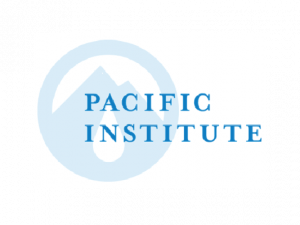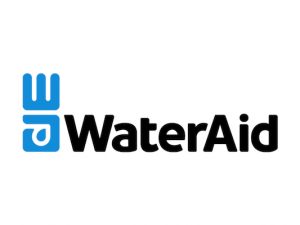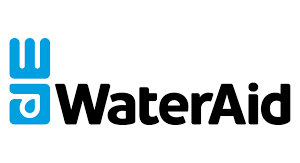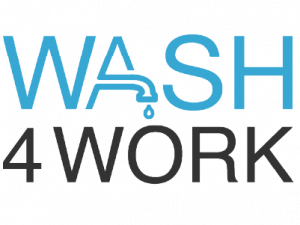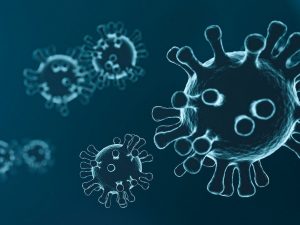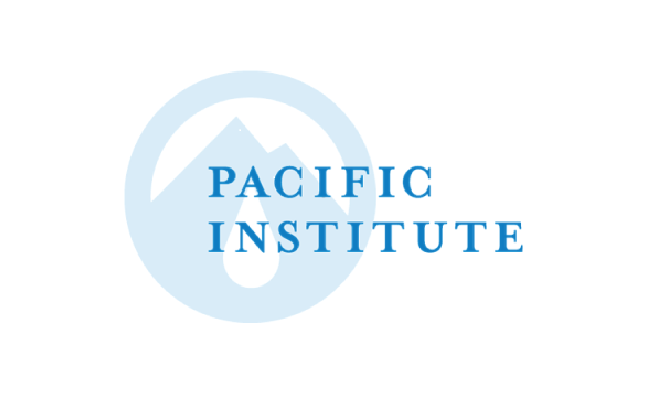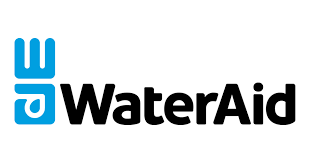COVID-19 has caused a worldwide public health crisis and severely disrupted the global economy. Proper handwashing plays a critical role in preventing the transmission of the disease and relies on an abundance of clean, accessible water. Yet an estimated 3 billion people worldwide do not have access to basic handwashing services in their homes and more than 2 billion live in water-stressed river basins where they may not have reliable access to freshwater resources.
To combat the spread of the virus and rebuild our economies, collective action on water is vital. Such action will not only prove invaluable in containing the pandemic, but in realizing the human rights to water and sanitation and achieving Sustainable Development Goal 6 on Water and Sanitation. Further it can be vital in accelerating a “blue” economy, one where economic well-being and water resilience mutually reinforce one another.
The business community has a key role to play in responding to COVID-19, rebuilding the economy, and preventing and mitigating future shock events — both broadly speaking and specifically regarding water and handwashing. However, the roles businesses can play have not yet been clearly articulated.
This site, developed by the Pacific Institute in its role as Co-Secretariat of the UN Global Compact’s CEO Water Mandate, with the contribution and expertise of global WASH NGO WaterAid, aims to fill the gap. Specifically, it:
- Articulates the connections between water, COVID-19, and business
- Offers a practical framework on the actions companies can take to advance COVID-19 response efforts in their operations, supply chains and the communities where workers live, paving the way for a “blue” economic recovery and long-term water resilience
- Connects businesses to capacity building resources and practical examples of water-related actions companies are already taking with respect to COVID-19
We will continuously refine this site based on our growing understanding of the crisis as well as user feedback.
Effective and responsible business action on the water- and handwashing-related elements of COVID-19 revolves around some key overarching principles:
1
Corporate risks and impacts — and therefore influence and responsibility — regarding COVID-19 go beyond the company fence line, extending to worker’s homes and throughout the supply chain.
2
Water stewardship and economic recovery go hand in hand. Companies can advance both through developing, implementing, and advocating for “blue” recovery strategies.
3
Companies can build resilience to catastrophic events by supporting multi-stakeholder collective action and effective, high-integrity public water governance.
The following high-level framework outlines the three core phases of responding to the water- and handwashing-related elements of COVID-19, as well as the various actions companies can take within each phase.
Workplaces where many employees congregate are at risk of amplifying the transmission of the virus through close contact and unsanitary conditions. Therefore, the first and most urgent phase of this framework is to implement concrete actions to: 1) identify risks and strategic responses, 2) safely and efficiently restore the flow of water at operations and business units (if facilities have been closed for a prolonged period); 3) provide trainings to employees on safe handwashing practices; 4) invest in handwashing facilities, materials, and protocols at the workplace, 5) encourage and facilitate proper water and handwashing practices among communities and suppliers, and 6) where appropriate and relevant, convert or focus business operations to develop products or services that combat COVID-19, such as soaps and hand sanitizers.
Before implementing any solutions, companies must first understand the key risk points for exposing their employees to COVID-19 and other threats resulting from the shuttering of their operations in recent months. Ideally, such an assessment is conducted as early as possible, identifies and prioritizes a company’s COVID-19 risks as they pertain to water and handwashing, and defines strategic solutions that effectively and efficiently manage those risks.
Risk identification will benefit from the completion of a Hazard Analysis in Critical Control Points (HACCP). The HACCP process can help identify opportunities for the virus to be contracted across various business settings, map out key points of exposure, and determine helpful mitigation actions. While such processes are typically employed for food safety, they can be contextualized for use on the water- and handwashing-related elements of COVID-19. NGOs such as WaterAid and others are available to help businesses and other organizations design relevant HACCP assessments across a variety of contexts and circumstances.
Strategic solutions should comprise both hardware (i.e., physical interventions such as new handwashing stations, signage, etc.) and software (i.e., training programs, protocols, etc.). Specific interventions are discussed below.
Practical Actions
- Conduct HACCP to identify risks
- Identify and prioritize strategic solutions, including software and hardware
- Work with WASH NGOs to support self-assessment process
As society begins to reemerge from quarantines, stay-at-home orders, and business shutdowns during the pandemic, attention must be paid to the potential health risks associated with stagnant water inside building plumbing. Under normal conditions, the regular flow of community tap water into and through building water systems minimizes the amount of bacteria and metals that build up in water. However, even after a short period of shutdown, stagnant water can pose risks to health if not carefully managed.
As such, if their facilities have been shut down, businesses should methodically restart the flow of water through their manufacturing operations, offices, and retail facilities to ensure the water is safe for people to drink and does not adversely affect any operations that require high-quality water.
NOTE: Available data and analysis do not provide any evidence that COVID-19 spreads more easily through water. As such, businesses where many employees work in or around large volumes of water are not currently believed to be at heightened risk of contracting the virus, relative to other types of businesses.
Practical Actions
- If possible, during a shutdown, facilities should maintain a minimum flow of water through the system.
- Contact your water utility to see if specific information is available for your system.
- To prevent bacterial growth, particularly Legionella, heat hot water to at least 140 degrees F (60 degrees C) and make sure it stays hot, greater than 131 degrees F (55 degrees C) at points of use.
- In buildings where water was stagnant for an extended period, flush both the cold and hot water piping and water storage. First flush the cold water and then the hot water at all points of use (faucets, showers, toilets, etc.) and in all water-using devices (dishwashers, washing machine, ice makers, etc.), with special attention to water outlets where exposure to contaminants is likely (showerheads, spas, etc.). Be careful to bypass point-of-use treatment devices during flushing and maintain those devices per manufacturer instructions.
Example
Facilities Management of Colorado State University maintains water flowing through the pipes of unoccupied buildings by regularly running faucets and flushing toilets. This ensures that the water remains safe to drink. Meanwhile, for buildings that usually serve large numbers of people and have extensive plumbing systems, it is impractical to continuously flush water through the pipes. CSU has posted signs on such buildings indicating that the water is not safe to drink and will flush the system upon reopening.
Water and handwashing at the workplace are critical elements of preventing the transmission of the virus regardless of the nature of the business or the type of facility. By washing hands thoroughly (and refraining from touching their face with their hands), workers can drastically reduce the likelihood of being infected or spreading the virus. This practice is both critically important at the workplace — in agricultural, manufacturing, and office settings — and at home. If workers do not wash hands properly at home, they increase the likelihood of contracting the disease and spreading it to co-workers once they return to work.
Often, a lack of awareness on how to wash hands effectively or the possible repercussions of not doing so is a key barrier to effective handwashing. Therefore, actions to educate employees on proper handwashing techniques are not only an ethical imperative, but critical for businesses’ ability to operate. If many employees become ill due to COVID-19 (or are caring for loved ones who are sick at home), the business will lose many productive hours due to absenteeism.
Effective WASH training programs make use of existing materials wherever possible. Companies can therefore build off of and expand their own existing processes, trainings, or procedures or make use of existing educational resources, such as the WaterAid infographic below. Many countries will also have national education campaigns that companies can integrate into their own programs and messaging.
Training programs should leverage a number of different educational and communication approaches, including audio and visual materials, social media outreach, experiential learning and demonstrations, and more. Leaflets and brochures alone are typically largely ineffective at achieving lasting behavior change. The messages across these different approaches should be comprehensive, consistent, and as concise as possible.
There is no one-size-fits-all approach for WASH messaging. Different companies will require different messages, processes, and approaches based on their own unique circumstances.
Practical Actions
- Collaborate with WASH NGO partners to conduct trainings on proper handwashing as well as the consequences of inadequate handwashing.
- Distribute educational leaflets and conduct trainings for workers and suppliers to support safe handwashing practices and other measures at the workplace and at home.
- Display banners on walls with prevention and protection advice.
- Develop and disseminate multimedia approaches, including audio materials (e.g. podcast), jingles in restrooms, visual materials (e.g., YouTube video training), infographics, and more.
Example
L’Oréal has developed an e-learning module called #SafeTogether that updates employees on the L’Oréal Group’s workplace hygiene and health protocols, including best handwashing practices. L’Oréal requires its employees to take the module, available in 14 languages, before returning to work. Over 14,000 employees have already successfully completed the course. L’Oréal has made a version of the module available publicly via CrossKnowledge, a digital learning company, where it can be used by CrossKnowledge’s 500 corporate clients.
Featured resources
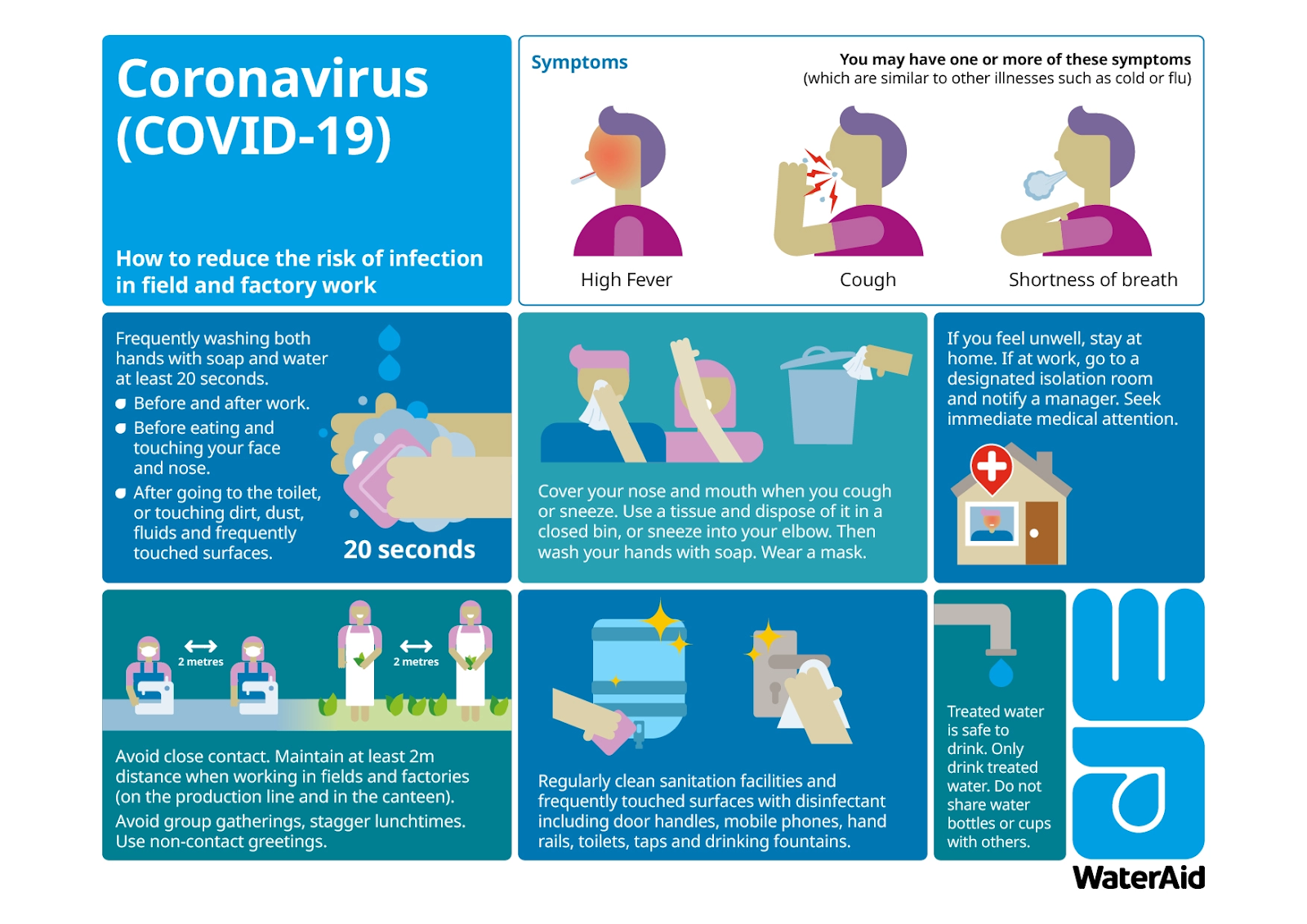
-
Prioritising Hygiene for Business Resilience: Enabling Safe Return to Work for Global Supply Chain Employees in the Face of COVID-19 – WaterAidRead more
Aimed at a business audience, the guidance explains the interdependent nature of workforce health and business resilience, never more critical than in the face of COVID-19. In it we suggest an…
Beyond training workers on using handwashing facilities properly, businesses must also ensure that proper handwashing facilities and access to clean drinking water are consistently available in the places where they are most likely to be needed. As with training programs, the types and numbers of facilities and protocols needed will vary from company to company depending on their unique circumstances. The facilities and protocols implemented should be a direct response to the risks and needs identified in the initial self-assessment. Companies should consider working with WASH NGOs to implement comprehensive, effective handwashing facilities and protocols.
Companies should develop and adopt protocols that ensure that these facilities are regularly cleaned, maintained, and kept operational. They can also use promotional campaigns to ensure that employees are aware of the new facilities, as well as cues (e.g., markers pointing to handwashing stations, markers showing proper distancing measures for handwashing queues, etc.) reminding employees of the facilities and proper hygiene behaviors.
Generally speaking, access to handwashing and drinking water is lower in middle- and low-income countries. A map of national statistics on access to hygiene can be found here (select 6.2.1b from the column on the left).
Practical Actions
- Collaborate with WASH NGO partners to develop and implement new handwashing facilities and protocols.
- Ensure that handwashing facilities are consistently available, maintained, and stocked with soap. Hand-washing facilities should be located near areas that are critical for hand washing (e.g. toilets, health clinic facilities, building entrances, meeting areas, cafeterias/canteens).
- Ensure the consistent availability of clean drinking water throughout the workplace.
- Regularly clean and maintain drinking water, sanitation, and hygiene facilities.
- Make available alcohol-based hand rubs (minimum 60 percent alcohol) and strongly encourage their use where hand-washing facilities are not available.
Example
CEMEX has adopted safety protocols aligned with global, national, and local health authority recommendations, including the “Taking care of family at home protocol,” “Personal Hygiene Protocol”, and the “Canteen and Resting Area Protocol” that emphasize proper handwashing, the provision of sufficient hand washing stations, and access to soap and water or sanitizing gel.
Businesses have the greatest ability to implement trainings, facilities, and protocols at their owned-and-operated facilities. However, they are still exposed to considerable risk due to improper practices at workers’ homes and among suppliers. As such, where possible, businesses should use their influence and financial resources to encourage and facilitate the implementation of such practices in homes and among suppliers.
As a starting point, companies can simply disseminate helpful educational materials, such as the WaterAid infographic and guidance, to communities and suppliers. Additionally, to improve WASH in workers’ homes, they can partner with local WASH NGOs or support local government WASH efforts. For suppliers, especially those that are less likely to have access to financial resources, businesses can consider investing in proper handwashing facilities, alcohol-based hand rubs, and/or access to clean drinking water in order to help ensure a consistent flow of critical supplies. They can also connect suppliers to local NGOs who may be able to assist them in developing such programs.
Practical Actions
- Share educational materials and guidance widely with local communities and suppliers.
- Encourage and facilitate suppliers’ implementation of proper handwashing facilities and protocols.
- Donate hygiene and water-related supplies and services to employees, frontline workers, and local communities.
Some, but not all, businesses have operations that can be converted to develop products and/or services that support COVID-19 response. This is most commonly found among breweries, distilleries, chemical manufacturers, and producers of household goods that can convert their core operations to produce hand sanitizer. Other businesses may already be producing helpful items like soap or bottled water and can refocus and amplify their production of those products. Companies can leverage their unique capabilities and assets (e.g. advertising or logistics) in partnership with other businesses and NGOs to expand access to hygiene and water related products and services.
Practical Actions
- Convert applicable business operations from regular products to hand sanitizers, soaps, drinking water, etc.
- Accelerate production of existing products and services to support COVID-19 efforts (e.g. logistics, advertisement, street sanitizing)
- Refocus water-related product delivery (e.g., water services or bottled water) to at-risk communities
Example
ACCIONA has implemented measures to continue provision of basic water and sanitation services to vulnerable populations in Peru, Mexico, and Panama amid the pandemic. For example, when the Chincha Baja community of Peru had an issue arise in their water-to-well pumping facility, ACCIONA resolved the issue. During the failure itself, ACCIONA ensured that the community had access to water by coordinating water distribution via a water tanker. ACCIONA has continued providing support to communities in Oaxaca, Mexico to build dry toilets and rainwater catchment systems during the pandemic, distributed cleaning and handwashing materials, and led sensitization activities on preventive measures.
Once the virus is mostly contained and businesses begin operations with some semblance of normalcy, there will still be much work to be done. Even once the direct health risks of COVID-19 have largely subsided, its effects on our global economies will linger, likely for years to come.
Much has been made of a “green” recovery to COVID-19: one that simultaneously stimulates and strengthens the economy and also advances critical climate goals that ultimately make our economies more sustainable and equitable. The total value of the world’s ecosystem services is estimated at some $147 trillion, but over 60 percent of these are being degraded or used unsustainably. The World Economic Forum (WEF) estimates that more than half of the global GDP, $44 trillion, is at risk due to nature loss. By protecting the environment, we protect our economy.
But this “green” recovery to COVID-19 must also be “blue”: a robust economic recovery goes hand in hand with water stewardship, defined as “use of water that is socially and culturally equitable, environmentally sustainable and economically beneficial” by the Alliance for Water Stewardship. Investing in drinking water, sanitation, and hygiene (WASH) both saves lives and brings economic benefits: for every US $1 invested in water and sanitation, US $4.30 is generated in economic returns through increased productivity. Public water infrastructure likewise offers a high return on investment, with the potential economic benefit of supplying needed water infrastructure in the United States alone estimated at $220 billion US dollars in total annual economic activity and 1.3 million new jobs. Finally, water-efficient business practices often save money which can then be re-invested in people and growing the business. Investing in significant water management technologies, such as circular water systems or state-of-the-art wastewater treatment processes, can also create jobs for those who install them. These water stewardship approaches often address climate change as well by reducing emissions, sequestering carbon, or helping businesses and communities adapt to the effects of climate change.
When we invest in water, we invest in people, the planet, and the economy.
Job creation is crucial to economic rebound in the wake of COVID-19. The International Labor Organization estimates that the equivalent of 400 million full-time jobs have been lost worldwide as of the second quarter of 2020. Companies have the opportunity to contribute to the global recovery by investing in cost-saving and job-creating practices that protect companies’ interests for the long term through water stewardship. Cost-saving practices will allow companies to invest in job creation.
The pandemic has demonstrated the high cost of disruption to business and global public health, with 2020 global economic losses due to coronavirus reaching $21.8 trillion US dollars according to one estimate. Environmental crises stand to cause similar losses in the near future: the International Labor Organization estimates that 1.2 billion jobs directly rely on environmental management, particularly jobs in farming, fishing, and forestry, with more jobs indirectly at risk. As climate change leads to increased flooding, drought, storms, heat waves, and refugee crises, these events will increasingly affect public health, employment, and commodity pricing.
Cost-saving water stewardship practices — particularly water use efficiency practices like leak detection and irrigation technology — allow businesses to cut costs, freeing resources for job creation. The Waste and Resources Action Programme estimates that many companies can decrease water use by 20 to 50 percent through efficiency technology. Companies implementing water stewardship practices can see a complete return on investment within the first year, largely through cost savings due to water use efficiency.
In turn, jobs are created both by research and innovation in stewardship practices and by implementation of existing technologies. Money saved through efficiency can be reinvested in water stewardship practices with a longer payback period and multiple benefits, such as nature-based solutions, investments in basin health, and community engagement.
Continued commitment to ensuring adequate WASH access in the workplace and in communities will further fuel economic returns. Promoting hygiene and improving WASH access, as discussed in Phase 1 of this guide, will both improve workplace productivity and protect workers’ health and business’ bottom line through reduced absenteeism.
Finally, some businesses are developing products that address water issues while also driving profit and creating jobs. Examples of businesses seizing water-related opportunities vary by industry – Bayer Crop Sciences is developing drought-resistant plant strains, while BASF estimates potential sales of US$1billion from water recycling, reuse, and treatment technologies, according to the CDP Global Water Report 2014. The sanitation economy offers further business opportunities that bring both social and economic benefit.
Practical Actions
- Build the business case for water stewardship through resources such as the CEO Water Mandate’s Water Stewardship 101 curriculum and through assessment tools such as Ecolab’s Water Risk Monetizer, WRI’s Aqueduct Water Risk Atlas, and WWF’s Water Risk Filter.
- Assess potential cost savings from efficiency and implement efficiency practices where they make economic sense.
- Invest returns from efficiency investments in job-creating water stewardship practices with longer-term payback periods and multiple benefits.
Example
As an example of cost savings due to efficiency improvements, UK beverage company Diageo plc reduced the volume of its water withdrawals by nearly one million cubic meters in 2014 and estimates the associated cost savings at US$3.2 million total. The introduction of a new soldering practice at Cisco significantly reduced water use and wastewater, saving the US electronics manufacturer more than US$1 million per year. Upon completion of a water efficiency project, US pharmaceutical company Merck will save 2.1 million cubic meters of water and in doing so save US$500,000 annually.
Nature-based solutions can also save costs. As one example, the Dow Chemical Company saved an estimated US$282 million by installing a wetland instead of a conventional treatment plant while still addressing a regulatory compliance issue.
Featured Resources
The supply chain can account for the lion’s share of a company’s water footprint, particularly for businesses that depend on agriculture, such as food, beverage, and apparel companies. Many companies begin by taking action on water in their own operations where they have the most influence, yet supply chain partnerships provide another important opportunity to advance water stewardship while contributing to economic rebuilding. The COVID-19 pandemic brought global disruptions to the supply chain due to lockdowns, travel restrictions, and labor shortages caused by illness. Yet beyond pandemic risks, supply chains face risk due to water and climate issues.
Supply chains often offer the strongest investment opportunities for water use efficiency, particularly for large brands that have already improved efficiency at their own operations. Companies’ suppliers may also benefit from investment in other stewardship practices, such as water reuse, circular water management, and other technologies. Reinvesting cost savings from efficiency in the supply chain through training and technological implementation does more than ensure supplies remain stable: this investment creates jobs in communities around the globe.
As the global economy moves to build strong supply chains in the wake of COVID-19, water stewardship practices and technologies stand to improve both resilience and economic rebound.
Practical Actions
- Prioritize supply chain investment by considering where water stress is already most pronounced, which suppliers bring the company the most economic value, and which suppliers have the highest need due to COVID-19 or other public health considerations.
- Work with suppliers to build a common understanding of water challenges and share technical knowledge and resources.
- Adopt scorecards or standards for worker and environmental protection across the supply chain, following in the footsteps of water stewardship leaders such as Nike, LM Ericsson, and Givaudan.
- Encourage and facilitate WASH access for suppliers’ workers, as discussed in Phase 1. These investments bring business benefits beyond immediate containment of the pandemic, such as by reducing employee absenteeism and staff turnover.
Example
The AgWater Challenge represents a group of nine businesses working in partnership with WWF and Ceres that are committed to improving supply chain performance on water. As one example, the Kellogg Company set ambitious commitments that include bringing climate, social, and financial resilience programs to one million farmers and workers. Kellogg reached over 300,000 farmers as of 2018 through climate and water sustainability programs, research, and technical assistance, and has demonstrated quantitative improvement across more than 198,000 hectares. Kellogg and other AgWater Challenge members report on their success in the 2020 Ceres/WWF AgWater Challenge Progress Report.
Featured Resources
Addressing the public health crisis is the first priority in our response to COVID-19. However, governments are already beginning to consider how to rebuild a robust global economy. In this context, businesses have the opportunity to advocate for concrete policy changes that protect both economic rebuilding and public health, such as public water infrastructure investment, industrial water use standards, and WASH access. Economic relief to industries and the economy more broadly can help create a “blue” economic recovery which acts on the imperative of the water crisis and the economic opportunities offered by water stewardship.
Existing calls to action such as the European Parliament’s Green Recovery Alliance, the International Energy Agency’s Sustainable Recovery Plan, the C40 Mayors’ Agenda for a Green and Just Recovery, and the World Economic Forum’s Great Reset advocate for a “green” recovery that addresses climate change impacts. These blueprints for a green recovery largely center on reducing emissions and reforming the energy and transportation sectors.
While these measures are crucial, we must also incorporate water stewardship and WASH access into our economic recovery. Businesses can advocate for “blue” government stimulus policies that go beyond mitigation measures to support adaptation through investment in public water infrastructure, broader WASH access (especially in underserved communities), and better industrial water use standards. By demonstrating the business community’s need for smart water policy, businesses can broaden the recovery conversation to include water issues.
Practical Actions
- Use private investment to spearhead calls for public investment. Consider both financial and in-kind commitments.
- Leverage the Ambition Loop framing to champion water-positive policies: strong action from business can support and inspire government action, and vice versa.
- Encourage governments to learn from the 2008 recession, when stimulus packages failed the green standard by spurring increased fossil fuel use, as reported by the Guardian.
- Frame this period of economic recovery as an opportunity to accelerate crucial actions on the UN Sustainable Development Goals, particularly SDG 6.
Example
In May 2020, more than 150 businesses representing more than $2.4 trillion of market capitalization affirmed their science-based commitments to a zero-carbon economy and called for governments to “prioritize a faster and fairer transition from a grey to a green economy.” Businesses have the power to shift public dialogue and prioritize environmental responsibility, an ambition that must be extended to include water issues.
Featured Resources
The climate crisis is in many ways a water crisis. Many of the worst, most visible impacts of climate change will be felt through our relationship with water. For the last several years, the concept of water resilience has become a call to action to design and implement our water systems such that we not only anticipate, prepare for, and respond to even the most damaging impacts of climate change, but mitigate climate impacts in the process.
COVID-19 has shown the fragility of our water systems, not only to climate change, but to many other crises. The climate crisis is far from the only major destabilizing force we must withstand in the years and decades to come. We must also make our water systems resilient to other possible major societal disruptions, including global pandemics, natural disasters such as earthquakes and tornadoes, terrorist attacks, and severe recessions.
Building a water resilient society means preparing the human and technological elements of our water systems not only for the many impacts and disruptions we can already foresee, but also all those we cannot. Businesses can advance water resilience by developing long-term corporate resilience strategies that span direct operations, catchments, supply chains, and local communities; investing in supplier water stewardship practices; advocating for effective, high-integrity public water governance; and joining on-the-ground collective action efforts in the world’s most at-risk river basins.
Water stewardship is a powerful way to cut costs and protect business interests for the long term. But improving basin resilience and maximizing a company’s benefit from water stewardship requires integrating water stewardship into the business strategy. Rather than pursuing water stewardship as a philanthropic activity external to a company’s core interests, businesses should consider water stewardship integral to managing business risk. Addressing water risk where it is most pressing strengthens the long-term viability of a business’ operations and generates buy-in from local stakeholders by demonstrating the importance of water stewardship.
Water supply instability, flooding, storms, and other climate-related water issues already affect lives and livelihoods. But these risks will only intensify as the planet’s climate continues to change. The number of people at risk from floods is projected to hit 1.6 billion in 2050, with $45 trillion worth of assets at risk. On the other extreme, global water demand is predicted to increase 55 percent by 2050, and an estimated 3.9 billion people will live in river basins under severe water stress.
Given that the global response to climate change is a work in progress and many climate outcomes are possible, effective risk management requires assessing potential future water risks based on different climate scenarios. Resilience leaders consider climate impacts beyond their operational boundaries, working with supply chains, local communities, governments, and business partners to ensure long-term water access for all. These leading companies have overcome the barriers to action on water-related climate risk, taking action now to protect their business interests for the long term.
Practical Actions
- Assess future water risks under different climate scenarios, paying particular attention to risks related to geography and to the supply chain.
- Create a targeted plan to build resilience where it is most essential to the business to improve basin health and community livelihoods.
- Include WASH access in a company resilience plan, given the compelling links between WASH and community resilience to climate change.
- Publicly share a business risk assessment and demonstrate how the company is addressing those risks.
- Include water and climate risks in annual financial reporting to demonstrate accountability and indicate that the company is addressing its most pressing risks.
Example
Between 2009 and 2019, beer company Heineken reduced its water use by one third. The company chose to build on this accomplishment by incorporating water stewardship into its core business through its 2030 goal, Every Drop, adopted in 2019. Beyond continuing to reduce water use, the strategy includes an ambitious replenishment goal: to rebalance all water used in water-stressed watersheds. The goal supports all breweries in water-stressed areas to assess their local context. Through these actions, Heineken advances the health of communities and the environment while also taking action to ensure the longevity of its business, for which water is an essential input — as the Every Drop site notes, beer is 95 percent water.
Featured Resources
- Right tool for the job: tools and approaches for companies and investors to assess water risks and shared water challenges (2020)
- Corporate Water Stewardship Case Studies (2020)
- UN Global Compact 20th-Anniversary Progress Report: Uniting Business in the Decade of Action (2020)
- Incorporating Multiple Benefits into Water Projects: A Guide for Water Managers (2020)
- Landscape assessment of benefit accounting of nature-based solutions for watersheds (2020)
- Corporate water resilience in an uncertain future (2020)
Although some water risk depends on a company’s individual actions, much of the water risk faced by a company operating in a given basin depends on the context of the watershed as a whole. Every basin’s water challenges are affected by all actors in the basin, manifesting in different water risks for different stakeholders. And as climate change intensifies water crises around the world, businesses and communities must act to mitigate these physical climate risks. It is therefore in businesses’ best interest to engage with public agencies and other stakeholders in a clear, balanced, and transparent manner to ensure effective management of shared risk.
Well-designed and consistently implemented regulatory frameworks are often the best — and only — way to address shared water challenges caused by catchment conditions. Effective governance can even lower the cost of doing business by successfully managing water issues. And by improving WASH access, water policy is crucial to protecting people and businesses from future pandemics.
Businesses advocate for responsible water use at every level of governance, from municipalities and catchment-scale water agencies to national political bodies and global initiatives. To facilitate effective, high-integrity public water governance, successful businesses adhere to guiding principles, including transparency and a respect for the distinction between public and private roles. Responsible corporate engagement supports the government’s mandate and responsibility to develop and implement water policy. Businesses should think beyond lobbying to undertake other forms of engagement such as involvement in policy implementation, local water management, and partnership with other non-public-sector entities that are affected by water policy.
Practical Actions
- Act proactively, rather than responsively, to champion policy that addresses water issues before disaster strikes.
- Join the Water Integrity Network (WIN) to promote high anti-corruption standards.
- Foster transparent, two-way communication with governments, communities, and other stakeholders to prevent policy and regulatory capture.
- Target engagement to the appropriate scale of government. See Table 1: Engagement across different scales of water policy in the Guide to Responsible Business Engagement with Water Policy.
Example
Lake Naivasha in Kenya is essential for fishing, farming, power generation, drinking water, and industry. Businesses addressed water management by helping implement Kenya’s national water policy, which requires decentralized governance by user groups. The Lake Naivasha Growers’ Group (LNGG) funded a Water Allocation Plan to help create local Water Resource Users’ Associations (WRUAs), which promote water conservation and environmental management. The Lake Naivasha WRUA worked with the government, CARE International, and WWF to undertake a Sub-Catchment Management Plan to improve water management, reducing shared risk around the lake.
Featured Resources
- Guide to Responsible Business Engagement with Water Policy (2010)
- Guide for Managing Integrity in Water Stewardship Initiatives: A Framework for Improving Effectiveness and Transparency (2015)
- Shared Water Challenges and Interests: The Case for Private Sector Engagement in Water Policy and Management (2014)
- From Footprint to Public Policy: The Business Future For Addressing Water Issues (2009)
The Water Resilience Coalition is an industry-driven, CEO-led coalition of the UN Global Compact’s CEO Water Mandate that aims to elevate global water stress to the top of the corporate water agenda and preserve the world’s freshwater resources through collective action in water-stressed basins and ambitious, quantifiable commitments. To date, 16 companies have joined.
In addition to the human right to water and sanitation, the Coalition is motivated by the business community’s need to protect water resources. Water stress results in increased costs, production interruptions, market instability and workforce hardship, among other profound challenges. In fact, the World Bank projects that by 2050, some regions could see their GDP growth rates decline by as much as six percent due to water-related losses.
Coalition members agree to deliver measurable net positive water impact in water-stressed basins, institute powerful water resilience practices across the value chain, and raise the profile of water through global leadership. The Coalition stands out for the scope of its ambition and its emphasis on quantifying impact.
Practical Actions
- Pose questions about the Coalition by getting in touch.
- Use the Water Action Hub to identify potential collective action efforts of interest.
- Sign the Coalition pledge.
- Join concrete actions with fellow Coalition members.
Example
The Water Resilience Coalition was launched in March 2020 by CEOs from seven major global companies – AB InBev; Diageo; The Dow Chemical Company; Ecolab; Gap, Inc.; Microsoft; and PVH Corp. – together with the UN Global Compact’s CEO Water Mandate and other NGO partners. The founders spearheaded the Coalition to unite CEOs of the world’s most influential companies around building a water resilient future.
Featured Resources
-
Prioritising Hygiene for Business Resilience: Enabling Safe Return to Work for Global Supply Chain Employees in the Face of COVID-19 – WaterAidRead more
Aimed at a business audience, the guidance explains the interdependent nature of workforce health and business resilience, never more critical than in the face of COVID-19. In it we suggest an…


